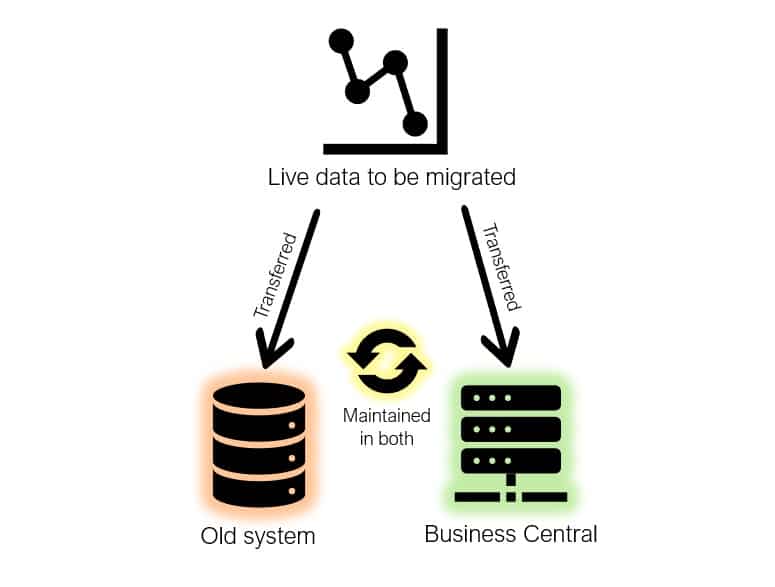Data conversion is perhaps the most crucial stage of a Business Central implementation.
It’s the crux of Enterprise Resource Planning (ERP) projects. The complexity is frequently underestimated: it’s never just a simple matter of copying and pasting information. We are shifting data between different environments, and when doing so we must tweak and tailor our old data to fit the new system.
This data is essential for day-to-day operations, including master records of customers, vendors, and items. Without access to this information a business would crumble.
Business Central is only as useful as the data you feed it. If time and care isn’t taken when migrating this data, problems arise in the future. The key is careful planning and knowing your business data inside out.
A data conversion case study with Twinings
Data conversion has been a major part of the Twinings Business Central implementation.
Ultimately, they had to move data from a number of disparate and outdated sources to Business Central: their one single source truth. For this reason, they had to ensure there was no underestimating the work involved.
Will Business Central be the sole source of truth?
They needed to identify all the different sources of data, consolidate it, re-structure it where required, and pull together additional data where needed. Such a momentous job required meticulous planning.
Early conversion planning
Will Business Central be the sole source of truth? If not, the integration between Business Central and other systems has to be coordinated some other way.
When you decide to use Business Central as your single source of truth, the Twinings team recommends 6 to 9 months of planning for a project of their size. They spent 6 months planning before kicking off the project, and then 4 months during the implementation stage for data preparation.
Two key documents supported the planning:
- Resourcing plan
Developed the year prior, the plan identified the resources required and cost involved. This involved external technical resources supported by functional leads to manage the conversion. - Detailed data conversion and migration plan
Technical Lead Peter Trudgen created the Twinings plan in the early stages of implementation. It detailed week-to-week tasks, delivery timelines and accountabilities.
This ensured that conversion work wouldn’t compete with usual business requirements. Thus, internal operations could resume without interruption, and the conversion still received the attention it commanded.
Diverse conversion project team
The project requires a conversion team with precise attention to detail and advanced Excel skills. Twinings sourced a mix of internal and external resources with commercial and technical expertise.
Resource who care
External resource were employed and dedicated to the project, including Technical Lead Peter, who managed the data conversion process with Fenwick. Peter was supported by other interface, functional and business leads for data preparation.
Peter possessed two vital characteristics: he cared about the data and had an exceptional eye for detail. These two traits are of enormous benefit for a job of such magnitude. You don’t want just anyone dealing with your sensitive data!
The perfect team mix
The game changer is having technical and commercial resource who can work together.
A large amount of the data cleansing was accomplished prior to Peter joining the team. It started with a strong plan that detailed adequate resources. Dedicated functional leads and SMEs provided essential business knowledge. A strong plan with adequate resources was drafted.
Peter then worked closely with the functional leads and SMEs to manage the schedule for data migration. The whole team was committed to specific goals, careful data consolidation and preparing for problems along the way.
Consolidation of data sources
During a major conversion, it’s vital to know where all the data resides and how it can be brought together.
Initial data workshops must determine how master data will be extracted, transformed and imported. While this process is time-consuming, it is necessary for identifying gaps and ensuring it meets Business Central requirements.
Manual entry or migration tool?
Some areas of master data can be keyed manually, such as short lists of customers, vendors and item records. However large lists of data require a migration tool to save time and avoid errors.
Fenwick Gold Company Setup Tool
We provide our Fenwick Gold Company Setup Tool as part of our Foundation module. This imports and extracts data, providing smart Excel templates for each area of master data.
Twinings consolidation
All data was consolidated in the scoping phase. This process was supported by an external data analyst, who determined where the data was and how it was used.
For project implementation, the external technical lead Peter provided expertise in ensuring that data would then be correctly captured and migrated. Some areas were manually migrated while others required our Company Setup Tool.
Commitment to conversion goals
Strong early planning established realistic achievable goals. Throughout all stages Twinings were rigorously committed to their goals with ongoing data management.
Their primary goal was to have a consolidated mapped view of all current data sources by the end of July, in preparation for data loads in August. Next, all master data would be loaded into the test system by the end of September to ensure functional and integration testing could commence in October.
Throughout October, this data testing was continually reviewed in preparation for live data loading. Twinings completed these final data loads by the end of November in preparation for training and for User Acceptance Testing (UAT) to commence in January the following year.
Alongside this, Twinings committed to review and implement master data management governance. This guarantees the ongoing success of the data management.
Prepare for conversion problems
Despite exhaustive preparation, some setbacks are unforeseeable. Although Twinings delivered the conversion within their targeted timelines, challenges still arose, requiring extra time and straining the budget.
Migrating from an old system
The most challenging aspect was migrating from a very old system. Theirs was 15 years old! A significant proportion of the data was outdated. A large amount of cleansing was needed to meet Business Central requirements.
Complex conversion
The sheer number of data sources and references added enormous complexity and required meticulous attention to detail.
The complexity struggles caused many specification and developmental change requests in the data preparation stage. As a result, populated data templates needed to be revised multiple times, which needed more time and greater resources. The amount of work in collation and validation of the data proved challenging to juggle with the demands of other project tasks.
Methods for converting data: Double entry
Once data is fully migrated, it must be successfully maintained in the lead up to go live.
Some attempt a full migration close to or during a Go-Live. We recommend avoiding this stressful and risky strategy!
Our preferred method is to maintain the data in two systems – old and new – before cutting over completely to Business Central. Throughout this process, live data is constantly refreshed into a test database. This allows it to be assessed to ensure it is fit for purpose.

Benefits of Double Entry
Running each system in parallel allows the business to confirm the integrity of the data. They can sign-off on the data, confident that it meets their needs. Double entry guarantees the live system will work, reduces risk, and is a great training exercise.
Downsides of Double Entry
Double entry of data into two systems can be very time consuming. It’s safe to assume that staff have to perform almost twice as much work. Be careful when overcommitting your team during a large project such as an implementation.







